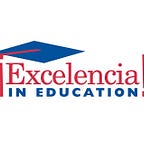Conflating Opportunity: Defining Access for DREAMers, DACA, and Undocumented Students
Ellen Lee, Policy & Research Intern
As a DACA recipient, I carry a degree of privilege and access that undocumented students do not. At school, I am able to work legally under a work permit and hold a driver’s license, while undocumented students are not. Despite these important differences, several terms have been created through immigration policy and refer to a snapshot in immigration history as well as different levels of access to participating in society. Often these terms are used interchangeably, and incorrectly, to address a complex group of undocumented students. Policymakers have the opportunity to be clear by using “DACA/undocumented students” when addressing this varied population, because it is the most inclusive term. In this piece, I explain the differences between the two terms and why the differences are important to know.
For example, the Biden administration recently proposed two policy changes addressing undocumented students, and described eligibility using two different and distinct terms to determine who would be eligible. The Administration’s most recent budget proposal (April 2021) included granting “DACA recipients’’ access to federal Pell Grants. Further, the American Families Plan stated that “DREAMERs’’ would have access to the Pell Grant and two years of free-tuition at community colleges. While both “DACA recipients’’ and “DREAMers’’ are currently ineligible for federal financial aid, the conflation of the terms can be confusing. Further, neither term encompasses all undocumented students.
Who is Excluded Under the Term “DREAMer?”
If the goal is to support all undocumented students, the Biden Administration and other policymakers should consider the full implications of limiting federal aid eligibility only to “DREAMers.” Although the DREAM Act, and its subsequent iterations, have not yet become legislation, those who would benefit from the Act are referred to as “DREAMers.” In 2001, Congress introduced the bipartisan Development, Relief, Education for Alien Minors (DREAM) Act to grant temporary conditional resident status and create a pathway to citizenship for undocumented immigrants brought as children “through no fault of their own.” In order to benefit from the DREAM Act, undocumented immigrants must have proof of arriving in the U.S. before the age of 16, proof of residency in the U.S. for at least five consecutive years, be between the ages of 12 and 35 at the time of the bill enactment, be of good moral character, and graduate from an American high school, obtain a GED, or be admitted to a higher education institution. Today, “DREAMers” is used to broadly refer to those who came to the U.S. at a young age.
If the Biden administration maintains eligibility for Pell Grants based on the 2001 DREAM Act criteria, the majority of the young undocumented population would be excluded. The term “DREAMer” does not represent 67% of those who are age-eligible for the DREAM Act for reasons ranging from age of entry, inability to pay for college, and criminal history. Further, the “DREAMer” narrative excludes many undocumented students who do not meet the high achieving qualifications of undocumented students who pursued higher education. Of additional concern is that the “DREAMer” narrative, specifically the definition that these children were brought into the country “through no fault of their own,” demonizes parents and families for seeking a better life for their children.
Who is Excluded Under the Term “DACA Recipients?”
The Obama Administration created the Deferred Action for Childhood Arrivals (DACA) program through an executive order in 2012 after the DREAM Act was not passed by Congress. DACA recipients pay $495 every two years to be deferred from deportation and are eligible for a social security number, work permit, and a driver’s license. Since 2012, more than 600,000 undocumented immigrants are DACA recipients.
DACA recipients cannot be conflated with “DREAMers” for three reasons. First, unlike the DREAM Act, DACA does not have a pathway to citizenship. Since DACA is an executive order, different administrations can attempt to rescind the program. With the Biden Administration’s promise to fortify and secure DACA, the number of recipients could exponentially increase in the next four years. Second, not all DACA recipients are “DREAMers.” When the Obama Administration established the DACA program, they assumed that more students would pursue higher education. However, studies show that DACA recipients were more inclined to enter the workforce because of their inability to afford higher education. The combination of increasing costs for higher education and the prohibition of federal financial aid too often prevents DACA students from pursuing higher education. Finally, DACA recipients have a level of privilege and access that other “DREAMers” do not have. Through their social security number, work permits, and driver’s license, DACA students are able to legally work to pay for school, unlike those without the benefits of DACA. DACA recipients and DREAMers are not one and the same.
DACA/Undocumented Students
The most inclusive term when referring to this diverse population is “DACA/undocumented students.” While the term DACA/undocumented students does not “roll off the tongue,” it does reflect the multifaceted issue of immigration and of students with different levels of access and privilege. We place emphasis on “DACA” because of how impactful the executive order has been for undocumented students. Grouping both terms also acknowledges that despite the different levels of privilege and access, both encounter institutional barriers and lack a pathway to citizenship.
There are people, including policymakers, who do not understand or value the terminology around undocumented students’ identity or the history. The distinctions between the three terms — DREAMer, DACA recipients, and undocumented students — are key to understanding how policies impact these different groups. To fully support all undocumented students, emphasizing the distinctions in the terms used in policies is imperative.
To read more on how the federal government can support DACA/undocumented students, see our other Medium post here.
